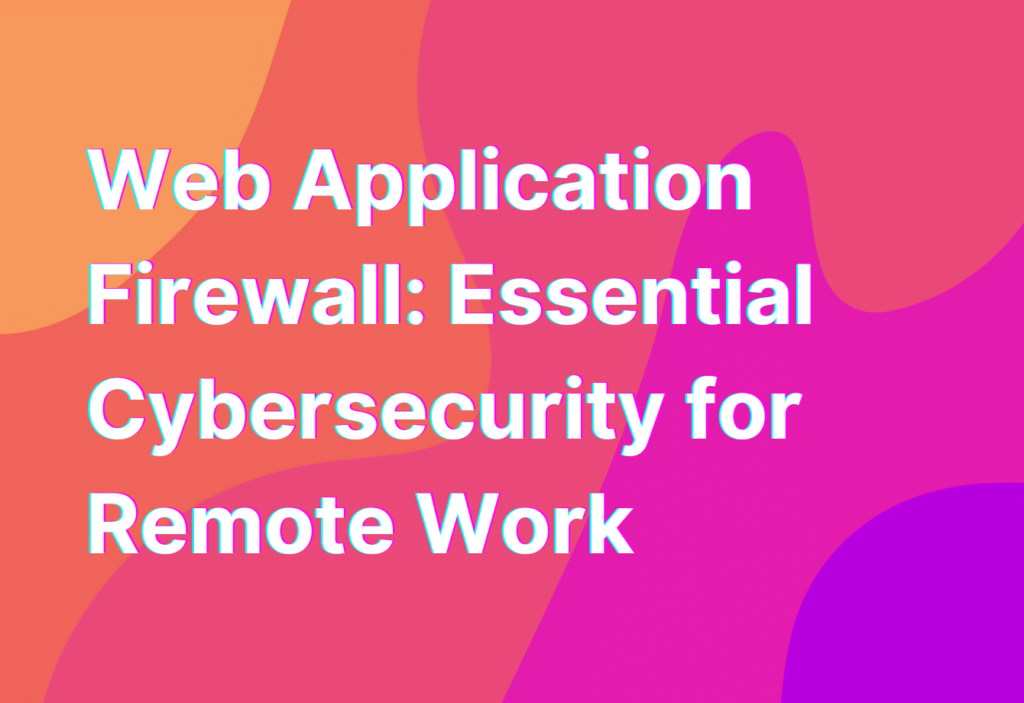Web Application Firewall: Essential Cybersecurity for Remote Work
Hey there, remote work warriors! It’s Ashley here, your friendly remote work advocate with another informative blog post. Today, we’re diving into the world of web application firewalls and why they are an essential tool for ensuring cybersecurity in remote work environments. So grab your favorite cup of coffee and let’s get started!
What is a Web Application Firewall?
Before we jump into the nitty-gritty details, let’s start with the basics. A web application firewall (WAF) is a security solution that helps protect web applications from various cyber threats. It acts as a shield between your web application and potential attackers, monitoring and filtering incoming and outgoing traffic to identify and block malicious activities.
Think of it as a bouncer at the entrance of a club, carefully checking IDs and keeping out any troublemakers. Except in this case, the bouncer is a sophisticated software that uses a set of predefined rules to detect and block suspicious or harmful requests.
Why is a Web Application Firewall Essential for Remote Work?
Now that we know what a web application firewall is, let’s talk about why it’s crucial for remote work. As more and more businesses embrace remote work, the need for robust cybersecurity measures becomes paramount. Remote workers often access company resources and sensitive data through web applications, making them potential targets for cyber attacks.
Here are a few reasons why a web application firewall is essential for remote work:
- Protection against common web vulnerabilities: Web applications are prone to various vulnerabilities, such as cross-site scripting (XSS), SQL injection, and remote file inclusion. A web application firewall helps detect and block these vulnerabilities, preventing attackers from exploiting them.
- Secure remote access: Remote workers often access company resources through web applications, such as project management tools, document sharing platforms, and communication software. A web application firewall ensures that these access points are secure, protecting sensitive data from unauthorized access.
- Real-time threat monitoring: A web application firewall continuously monitors incoming and outgoing traffic, analyzing patterns and behaviors to identify potential threats. This real-time monitoring allows for quick detection and response to any suspicious activities.
- Improved compliance: Many industries have specific compliance requirements, such as HIPAA for healthcare or PCI DSS for payment processing. A web application firewall helps businesses meet these compliance standards by providing an additional layer of security.
- Peace of mind: With a web application firewall in place, remote workers can focus on their tasks without constantly worrying about cybersecurity threats. It provides peace of mind knowing that their web applications are protected.
How Does a Web Application Firewall Work?
Now that we understand the importance of a web application firewall, let’s take a closer look at how it actually works. A web application firewall operates at the application layer of the network stack, analyzing HTTP and HTTPS traffic to identify and block potential threats.
Here’s a simplified breakdown of the process:
- Request filtering: When a user sends a request to a web application, the web application firewall intercepts the request and analyzes it. It checks for any suspicious patterns or known attack signatures.
- Rule-based filtering: The web application firewall compares the request against a set of predefined rules. These rules define what is considered safe and what should be blocked. If the request matches any of the rules, it is blocked.
- Behavioral analysis: In addition to rule-based filtering, a web application firewall also uses behavioral analysis to detect anomalies. It looks for unusual patterns or behaviors that may indicate an attack.
- Response filtering: Once the request has been analyzed and deemed safe, the web application firewall allows it to proceed to the web application. It also filters the response from the web application, ensuring that any potentially harmful content is removed before reaching the user.
By combining these techniques, a web application firewall provides a robust defense against a wide range of cyber threats.
Wrapping Up
And there you have it, folks! A web application firewall is an essential tool for ensuring cybersecurity in remote work environments. It protects web applications from common vulnerabilities, provides secure remote access, offers real-time threat monitoring, improves compliance, and gives remote workers peace of mind.
If you want to dive deeper into the world of cybersecurity and remote work, be sure to check out our article on XSS Payloads: Cybersecurity for Remote Work. It’s a fascinating read that will give you even more insights into keeping your remote work environment secure.
Stay safe, stay secure, and keep rocking that remote work life!


